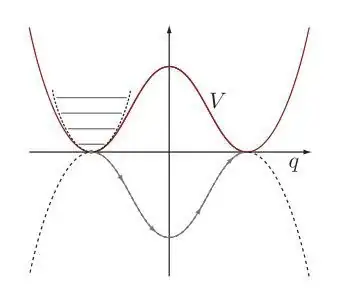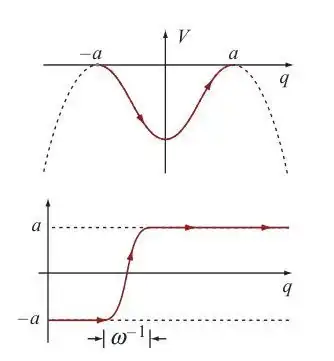When we talks about quantum mechanical tunneling in the formalism of path integral, we normally say that there's no classical (stationary-phase) path connecting the two minima of the potential so we need to go to the imaginary time formalism.
See, for example, the figure in Altland&Simons Chapter 3.3.1, we want to calculate $G(a, -a; t)$ using semi-classical approximation. Mathematically, we just need to find a classical trajectory s.t. $q(0) = -a, q(t) = a$ and expand around it. That's easy, as long as the particle starts at $q(0) = -a$ with sufficient velocity, it can roll over the barrier and get to $q(t) = a$.
But A&S said (chapter 3.3.1):
In doing so, it is understood that the energy range accessible to the particle is well below the potential barrier height......Of course one may think of particles “rolling” over the potential hill. Yet, these are singular and energetically inaccessible by assumption.
I don't understand what they are saying, since mathematically we just want to calculate $G(a, -a; t)$ and it is defined by path integral, it has nothing to do with "energy of the particle".
Similarly, when we use the imaginary time formalism and write the classical trajectory as combination of instantons, we assume that the instanton has no initial velocity at the hill of the potential. (So, the instanton actually last for infinity long time, the classical trajectory written as combination of instantons are just the approximate stationary phase solution.) But again, thinking mathematically, we just want to find a solution s.t. $q(0) = -a, q(\tau) = a$, as long as we give a small velocity for the particle at $\tau = 0$, we can find the exact solution satisfying this condition. (the particle moves slowly down the hill due to the small initial velocity and then goes across the valley and then gets to the other hill.) So why are we expanding the path integral around these multiple approximate stationary-phase solutions not around the unique exact solution?

